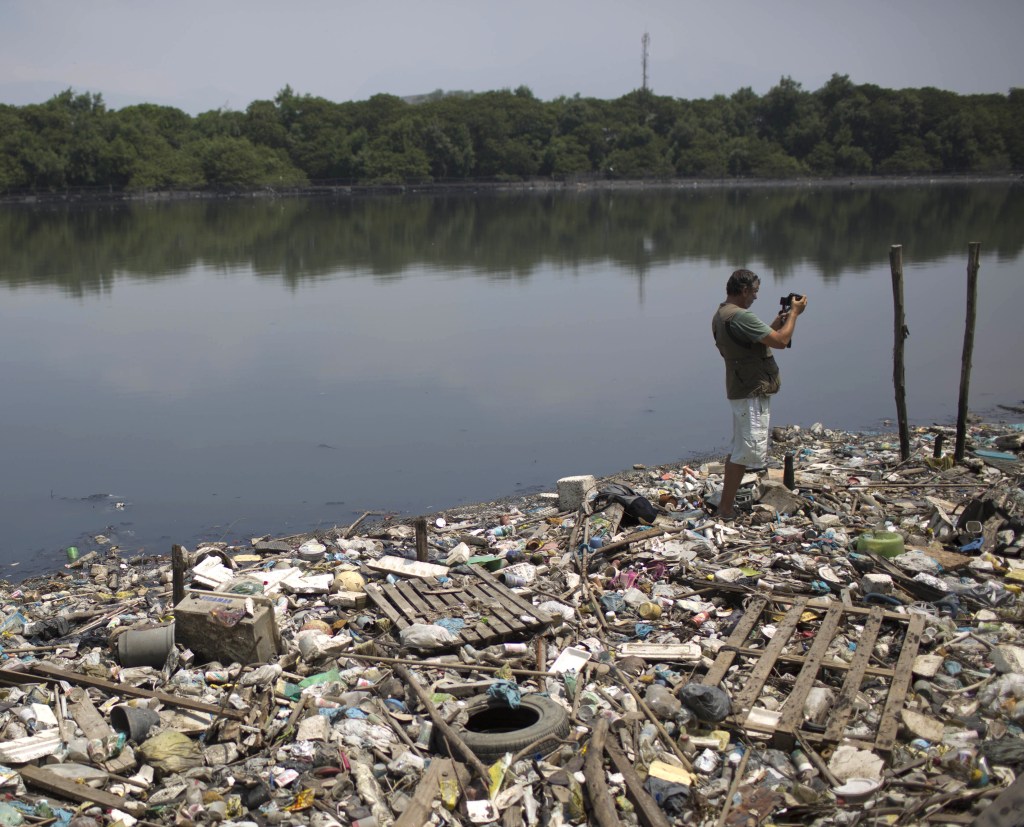RIO DE JANEIRO — Rio de Janeiro’s endless beaches and lush tropical forest will be a photographer’s dream during the 2016 Olympics. But zoom in on the likes of once-pristine Guanabara Bay, and the picture is of household trash and raw sewage.
In the neon green waters around the site of the future Olympic Park, the average fecal pollution rate is 78 times that of the Brazilian government’s “satisfactory” limit – and 195 times the level considered safe in the U.S. Nearly 70 percent of Rio’s sewage goes untreated, meaning runoff from its many slums and poor neighborhoods drain into waters soon to host some of the world’s best athletes.
Unless Brazil makes headway in cleaning up its waters, experts warn the Summer Games could pose health risks to athletes and mar what officials hope will be a global showcase event. Instead of the soaring vistas of Sugarloaf Mountain, the world could instead see old couches in the bay and tons of dead fish floating atop a city lake.
Rio’s Olympic committee has pledged in writing that the pollution problems will be fixed, and many had hoped the Olympics would force authorities to tackle decades of neglect and poor planning that have blighted waterways.
Leonardo Gryner, chief operating officer of Rio’s organizing committee, has acknowledged the extent of the water quality problem. But he said projects were “well advanced” to make good on the city’s commitment to reduce 80 percent of the pollution flowing into the bay, where sailing and wind surfing events are to be held.
With just 21/2 years to go before the games, however, experts say cleanup efforts are moving at a snail’s pace and haven’t significantly improved capacity in sewage treatment plants or hooked up more of the city’s 6 million residents.
“The high concentrations of untreated human waste means there are pathogens and disease-causing organisms in the water,” said Dr. Casey Brown, a professor of civil and environmental engineering at the University of Massachusetts Amherst. “If I were going to take part, I would make sure all my shots were up to date.”
Tests show the problems are still severe in several of the competition venues.
At the site of the Olympic Park, in the Barra neighborhood, untreated human waste flows from nearby condominiums and sprawling shantytowns, presenting an immediate health hazard, according to Rio de Janeiro Environment Ministry documents examined by The Associated Press. Pollution fills many of the waterways in Barra, where about half the Olympic events will be held.
In the waters just off Copacabana beach, the measurement of fecal coliform bacteria spiked to 16 times the Brazilian government’s satisfactory level as recently as three weeks ago, bad news for the marathon swimmers and triathletes set to compete there.
The Lagoa Rodrigo de Freitas often experiences huge fish die-offs that leave its surface blanketed with tons of dead fish. Rowing and canoeing events are set to take place on the briny lake.
Another entrenched problem is the 148-square-mile Guanabara Bay, where the only exit for foul, polluted waters is through a narrow opening onto the Atlantic.
Send questions/comments to the editors.




Success. Please wait for the page to reload. If the page does not reload within 5 seconds, please refresh the page.
Enter your email and password to access comments.
Hi, to comment on stories you must . This profile is in addition to your subscription and website login.
Already have a commenting profile? .
Invalid username/password.
Please check your email to confirm and complete your registration.
Only subscribers are eligible to post comments. Please subscribe or login first for digital access. Here’s why.
Use the form below to reset your password. When you've submitted your account email, we will send an email with a reset code.